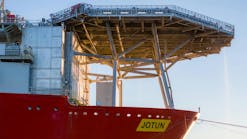Oil Search has begun front-end engineering and design (FEED) stage for Phase 1 of its Pikka oil development on the North Slope of Alaska.
Phase 1 involves a single drill site and a production facility with a capacity to produce 80,000 b/d of oil, the company said.
The FEED program will involve finalizing the design scope, execution plan, budget and schedule. It will also reduce project risk by ensuring the design supports optimal expansion to deliver full value from the significant Nanushuk reservoirs, the company continued.
The work will focus on the single initial drill site (Nanushuk B) along with pipelines and operations pad infrastructure including camps. It will address drilling milestones, including final designs for the wells and drilling processes and systems. There will also be procurement of key items of materials and equipment with the ultimate aim of bringing Phase 1 on stream in 2025.
Oil will begin detailed engineering and procurement for the seawater treatment plant that will provide water to support the reservoir water-flood program.
Phase 1 cost is estimated at $3 billion and is expected to produce oil at a breakeven cost of supply of less than $40/bbl Brent inclusive of 10% return.
Oil Search said cost savings have been achieved by using standardized modular process facility design and off-the-shelf equipment. The modules can be transported by truck to the North Slope which provides flexibility and reduces risk in the project schedule, the company said.
Capacity will be added in subsequent phases of the project.
Groundwork carried out in 2020 included construction of pads for the Nanushuk B drill site, production facility, and operations center. In addition, a 59-m bridge has been built spanning the Miluveach River and an 18-km gravel road has been constructed so that Pikka can have year-round access to the existing Alaska North Slope infrastructure.
Oil Search is now focused on arrangements for a sell-down of a 15% interest in the development area (solely or in conjunction with JV partner Repsol) and securing project level financing to fund at least 50% of initial Phase 1 project costs. A final investment decision is anticipated later this year.

